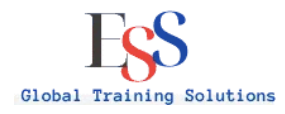Sentence Completion Prompts: Boost Your Writing
Ever felt stuck staring at a blank page, unsure how to start your next writing masterpiece? Sentence completion prompts might be the key to unlocking your creativity and enhancing your writing skills. These tools in language modeling and natural language processing offer a springboard for writers of all levels to dive into their work with confidence and flair.
From simple fill-in-the-blank exercises to complex contextual tasks, sentence completion prompts stimulate imaginative thinking and improve language fluency. They’re not just for overcoming writer’s block; they’re a gateway to exploring diverse writing styles and expanding your vocabulary.
Let’s dive into the world of sentence completion prompts and discover how they can transform your writing journey. Whether you’re a beginner or an advanced writer, these prompts offer something for everyone. Completion rates range from 60% for low-beginning levels to an impressive 85% for high-advanced (GRE) levels.
Key Takeaways
- Sentence prompts help overcome writer’s block and expand vocabulary
- The challenge provides prompts that inspire imagination
- Using diverse sentence prompts can expand vocabulary and language skills
- Sentence completions should be done quickly, without overthinking
- The technique fosters insight, integration, and spontaneous behavior change
Understanding Sentence Completion Prompts
Sentence completion prompts are key in text generation and learning languages. They ask writers to fill in missing words or phrases. This helps improve their understanding of context and predicting sequences.
Definition and Purpose
These tasks test vocabulary, grammar, and logical thinking. They come in many forms, like single-word blanks or multiple-choice. They are great for checking reading and analytical skills, helping both language learners and test-takers.
Types of Sentence Completion Tasks
There are many types of sentence completion tasks. Each has its own purpose:
- Restatement: Rephrasing the given information
- Comparison: Finding similarities between concepts
- Contrast: Identifying differences
- Cause and Effect: Understanding relationships between events
These tasks can be specific or open-ended. They affect responses differently. They help with understanding the meaning and structure of language.
Applications in Language Learning and Assessment
Sentence completion prompts are used in tests like SAT, GRE, TOEFL, and ISEE. They check vocabulary and grammar skills, boosting scores. Researchers use them to study language use and language learning theories. By doing sentence completions, learners can enhance their writing and get ready for verbal and reading tests.
The Power of Sentence Starters in Writing
Sentence starters are key to better writing. They help move ideas smoothly and introduce new topics. They’re especially helpful in school work where clear writing matters.
Studies show that sentence starters boost reading skills in students. They make writing easier and more thoughtful. Teachers use the C.M.P.R. method to teach them in class.
These starters improve how well students write and talk. They encourage deeper thinking and make writing more interesting. Teachers use them to start conversations and teach new words.
Techniques like Masked Language Modeling and Fill-in-the-Blank Tasks are similar. They help students understand and reason better. Using these tools, writers can try new styles and get past writing blocks.
For kids, sentence starters are super important. In kindergarten and first grade, they help kids share their thoughts and feelings. This early practice builds strong reading and writing skills.
Sentence Completion Prompts: Techniques and Strategies
Learning to complete sentences can make you a better writer and test-taker. These exercises, like Cloze Tests, are used in many exams. Here are some tips to help you do well.
Contextual Understanding and Analysis
To succeed, start by analyzing the sentence carefully. Look for hints in the text that suggest the missing word. Also, notice the sentence’s structure and any key words that might show its meaning.
Vocabulary Expansion through Prompts
These exercises are great for learning new words. They show you how to use them in sentences. Keep a list of new words and study their meanings and uses.
Developing Logical Reasoning Skills
These prompts help improve your logical thinking. Try to imagine different words for the blanks and use a process of elimination. For questions with two blanks, start with the second one and work your way back.
| Strategy | Benefit |
|---|---|
| Thorough Reading | Identifies contextual clues |
| Elimination Method | Narrows down choices |
| Vocabulary Building | Improves overall performance |
| Backward Working | Helps with multi-blank questions |
By using these strategies and practicing often, you can get better at Language Modeling. Remember, getting good takes time and effort. Keep working at it.
Enhancing Creativity with Fill-in-the-Blank Exercises
Fill-in-the-blank exercises are great for boosting creativity and solving writing problems. They use Text Generation and Natural Language Processing to spark new ideas. This helps writers explore different styles and think outside the box.
Stimulating Imaginative Thinking
These activities improve creative thinking and flexibility. They give writers a starting point, encouraging them to think differently. This way, writers can solve problems and come up with fresh ideas.
Overcoming Writer’s Block
Writer’s block is a big challenge for many. Fill-in-the-blank prompts help by giving a structure to work with. This method lowers anxiety and helps writers get started and keep going.
Exploring Diverse Writing Styles
These exercises let writers try out different styles. They can write in formal or casual tones. By doing this, writers can become more versatile and create unique content.
| Technique | Benefits | Applications |
|---|---|---|
| Fill-In-The-Blank Prompting | Enhanced Interactivity, Contextual Completion | Storytelling, Creative Writing, Language Learning |
| Placeholder Usage | Specific Information Retrieval | Problem-Solving, Memory Retention |
| Model Interaction Methods | Improved Critical Thinking | Brainstorming, Idea Generation |
Adding fill-in-the-blank exercises to their routine can help writers grow creatively. This method, based on Natural Language Processing, is helpful for both new and experienced writers.
Incorporating Sentence Completion Prompts in Daily Writing Practice
Sentence completion prompts are great for improving your writing. By adding them to your daily routine, you can get better at language and sequence prediction. Let’s see how to use them effectively.
Begin your day with a 10-minute sentence completion exercise. This short session can spark your creativity and get your writing ready. Try to come up with 6-10 endings for each prompt, letting your thoughts flow freely.
To get the most out of sentence completion prompts, follow this weekly plan:
- Monday: Build sentences based on a picture
- Tuesday: Write different sentence types (simple, compound, complex)
- Wednesday: Find and fix sentence fragments
- Thursday: Mix sentences for better flow
- Friday: Unscramble words to form correct sentences
As you get better, make the exercises harder. Begin with unscrambling 5-6 words and then move to 10+ words. This will help you predict sequences better and improve your sentence structure.
| Week | Focus | Activity |
|---|---|---|
| 1-10 | Basic Sentence Structure | Simple sentence unscrambling (5-6 words) |
| 11-20 | Intermediate Complexity | Compound sentence formation (7-9 words) |
| 21-30 | Advanced Language Modeling | Complex sentence construction (10+ words) |
Consistency is crucial. Spend just 3-5 minutes each day on these exercises. You’ll see your writing get smoother and more confident over time. Enjoy the journey of improving your language skills and watch your writing grow!
Conclusion
Sentence Completion Prompts are great for improving writing and language skills. They are key in Natural Language Processing. They help writers of all levels get better at vocabulary, grammar, and thinking critically.
By doing these exercises often, people can do much better in language tests and real writing tasks. Studies show that practicing these prompts can lead to higher grades and success in exams. For example, the more time spent on these questions, the better the marks.
Learning rare words and improving reasoning skills through prompts also helps. This makes it easier to choose the right answers in tests.
Sentence Completion Prompts also have big impacts on society. Research shows that when dads help with household chores, girls are less likely to choose traditional female jobs. This shows how language exercises can help fight gender stereotypes and empower leaders.
As we keep finding new ways to use Sentence Completion Prompts, their importance grows. They help us communicate better and think more critically.
Source Links
- Sentence Completion Worksheets
- 119 Sentence Prompts Challenge That Will Change Your Writing Skills
- Sentence Completion I | Nathaniel Branden
- Sentence completion tasks – Vocab, Definition, and Must Know Facts | Fiveable
- 501 Sentence Completion Questions
- The Power of Sentence Stems
- Sentence Starters – How to Use with Examples
- Sentence Starters – Bartleby’s Box of Primary Goods
- Sentence Completion – Tricks and Strategies
- SAT Sentence Completion Strategies – Tips for SAT
- 5 Tips for Answering SAT Sentence Completion Questions
- Prompt Engineering – Fill-In-The-Blank Prompts
- Unlocking Creativity: Embracing the Power of Fill in the Blank – FasterCapital
- Help! My students don’t write in complete sentences. – The Literacy Effect
- 5 Highly Effective Sentence Writing Activities
- Sentence Completion II | Nathaniel Branden
- Sentence Completion: Verbal Ability Questions and Answers – GeeksforGeeks
- Sentence Completion 2024 important MCQ
- Concluding Sentences Worksheets – 15 Worksheets.com







